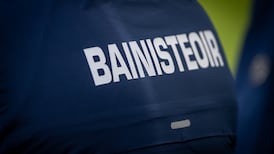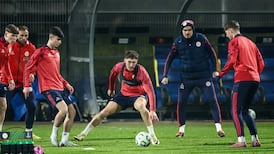The 10,000 metres is the longest race on the track. That’s 25 laps around, 400m each, and definitely no shortcuts.
When I started out running 1,500m and 3,000m races, and later the 5,000m, the 10,000m sounded impossibly long, and in some ways a little mind-boggling. How could anyone run so far around the track and not lose interest?
I had run a few 10km on the road, but when I eventually got to run 25 laps around the track I realised it’s a lot easier. Something about the consistent laps makes it easier to pace yourself, to get into a nice rhythm, keeping up until those final few laps when the real racing begins.
It generally takes the men a few minutes under 30, the women a few more. When you consider many sports events extend beyond an hour, and involve a half-time break, this race requires a relatively short attention span to watch.
Still, most people consider the 10,000m on the track a little tiresome, to watch or to run. One thing required is an engaging race, rather than just one person time-trialling, the rest of the field spread out around the track with the result decided long before the finish line.
Last Saturday in London showed just how engaging 10,000m running can be. The European Cup 10,000m event has been taking place for 21 years and this year took on a new life, engaging runners, spectators and those of us watching online.
Wiped out
It doubled up with the “Night of the 10,000m PBs” (personal bests), hosted by Highgate Harriers athletics club at the Parliament Hill athletics track on the south side of Hampstead Heath. Each European country is allowed to send a team of up to six athletes, their top-three scoring to determine who wins the European 10,000m Cup.
The event rarely attracts much interest from Ireland. But on Saturday, in the new format, it attracted an Irish men’s and women’s team, both finishing a decent sixth, on par with recent results at European cross country level.
A few years ago the European Cup was in danger of being wiped out. It was fading towards a niche market, more a time-trial opportunity for one or two athletes chasing a qualifying time. It’s not very motivating for any athlete to travel to an event and find they are just soloing around the track for 25 laps. There is an energy required from the surroundings, the spectators and the competition to lift an athlete to achieve a satisfying performance, especially over 25 laps. There needs to be an even spread of athletes to keep the field intact and the race alive.
In 2016, an email landed on my desk from Pierce O’Callaghan, the former international race-walker with a role in European Athletics, who had the task of working out if the European Cup was a viable event. He wanted to know my thoughts.
I felt it was worth turning it into the event it deserved to be. No matter what ideas were tossed around, it was still 25 laps of the track and that needed some reinvigorating to be attractive to the athletes and spectators.
At the time the Highgate Harriers 10,000m night of PBs was gaining traction, attracting athletes chasing times and looking for an early season race. Highgate took their inspiration from annual events at Stanford University in the United States, where athletes from all over the world travel to chase personal bests in an engaging arena. This was the template the European Cup needed.
‘Beer ’n cheer’ tent
The night of 10,000m PBs is as much about the race as the pace, and by focu
sing on this it has grown into the event that we saw last Saturday night, attracting spectators around the side of the track, filling up on good food and having fun. All while cheering the athletes as they lapped the track, which included running through the noisy “beer ’n cheer” tent on every lap. A little fun for the runners and spectators.
The collaboration between European Athletics and the Highgate Athletics club, led by race director Ben Pochee, turned out to be the perfect recipe to ensure a future for the European Cup 10,000m. Highgate maintained control of the event, inviting runners outside the European teams. There were nine 10,000m races of varying speed, all building up to the seeded men’s and women’s races later in the evening when conditions were more likely to be still and cool – perfect for a fast pace.
The men’s A race had 15 athletes within one minute of the winner. It was a race within a race, incorporating the British Championships, and this came down to a sprint over the final metres, with just one second separating the top three athletes.
Maybe Athletics Ireland should consider this race as a new method of crowning the Irish 10,000m champion in 2019.
The idea could spread even further. When I was growing up there was always a bit of magic and awe associated with events like the Bislett Games in Oslo, and the Weltklasse in Zurich. Somehow these tracks seemed faster and shorter, with the energised crowd willing the athletes on to great performances. Athletics is not just about the training and preparation: there also needs to be a little of the unknown that comes with racing, rising to the challenge and doing things you never thought possible.
The training can only take you so far. There’s also the magic of racing and the impact of a competitive contest in front of an excited crowd. It’s there that the performance breaks free of the athlete. This has been lacking in recent years. Athletics outside the championships has become a little too clinical and predictable – most middle-distance races are set up and there is not much left to grab the imagination and engage the audience.
A lot can be learned from Highgate. We don’t need to change the traditional events, including the Diamond League. Just build meaningful races that generate interest and excitement.
Highgate are already planning the 2019 event, and have me excited enough to plan on making it along too.









